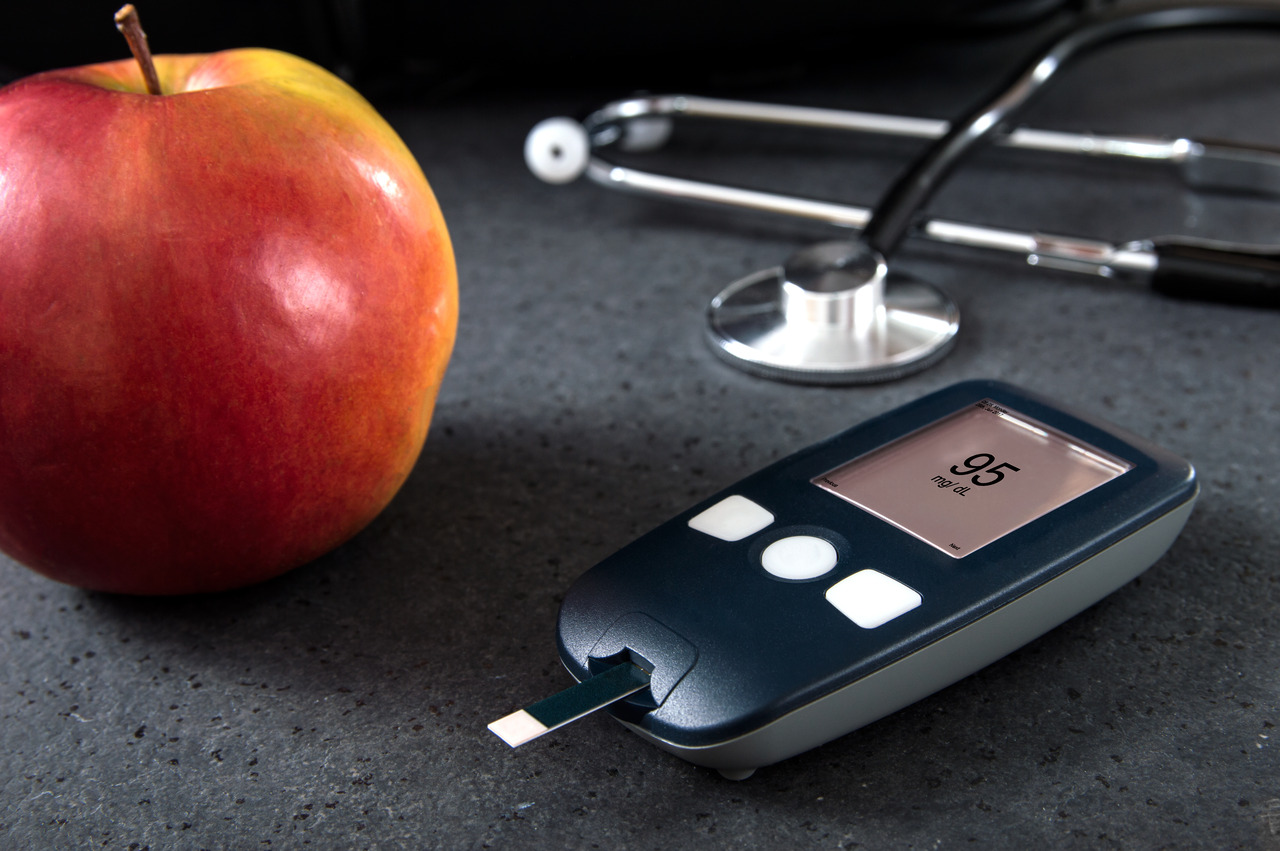Exercise is essential for everyone, especially those with diabetes. Being physically active on most days of the week keeps you healthy by lowering long-term health risks, improving insulin sensitivity, and enhancing mood and overall quality of life. Cardio or cardiovascular exercise is one of the most common types of exercise. Using muscles helps to burn glucose and improves insulin function. However, some exercises can raise blood glucose levels too. For example, some workouts, such as heavy weight lifting, sprints, and competitive sports, stimulate the production of the stress hormone adrenaline. Adrenaline raises blood glucose levels by stimulating the release of glucose by the liver.
When you do moderate exercises, like walking, it makes your heart beat a little faster with a slight huff and puff. During breathing, the heart rate increases, wherein more oxygen enters your system. It gradually improves your body’s oxygen utilisation. As a result, your muscles use more glucose (the sugar in your bloodstream). Over time, it lowers blood sugar levels and improves insulin function in the body.
HealthifyPro 2.0 is an excellent way to monitor your glucose levels. It includes a Continuous Glucose Monitor (CGM) device that monitors your glucose levels in real-time. A metabolic panel with over 80 indicators assesses your intrinsic health first. It’s a great way to see how exercise affects your glucose levels. A wearable device with real-time AI, a CGM-based BIOS, and pro coach inputs transform how one handles metabolic health. As a result, tracking how your blood sugar levels change while exercising is easier. Check your blood sugar levels before, during, and after exercise to avoid potential problems.
Cardio and Blood Sugar Levels: The Connection
Exercise is one of the critical components of diabetes management, as per the American Diabetes Association. They advise breaking up any prolonged sitting time every half an hour with 3 minutes or more than that of light movement. It can aid in better blood glucose management for those who struggle to maintain acceptable blood sugar level ranges. It also benefits those dealing with issues such as high cholesterol or obesity.
Exercise can affect your blood glucose levels for up to 24 hours after your workout. Additionally, exercise makes your body more sensitive to insulin. It occurs both during and right after the activity. The time of day may also affect insulin sensitivity. In general, as the day goes on, your insulin sensitivity declines.
The difficulty of monitoring and managing the condition grows as the number of persons with type 2 diabetes rises. According to a study, self-monitoring of blood sugar is frequently advised for persons with non-insulin-treated diabetes since it may enhance glycaemic control. Furthermore, aerobic exercise may help reduce blood glucose levels. Anaerobic exercise, on the other hand, raises your levels. Finding the best fitness regimen for you necessitates careful planning and understanding of how your body reacts to various forms of exercise in terms of blood sugar levels.
The HealthifyMe Note
Muscle cells use the available insulin more effectively after aerobic exercise, which increases your insulin sensitivity; aerobic exercise can help you lower your blood sugar levels for up to 24 hours (or longer). Furthermore, when you exercise, your muscles require more glucose. Hence, increased blood sugar absorption by your muscles naturally reduces blood sugar levels.
Physical Exercise Recommendations for Diabetics
Diabetes mellitus is one of the world’s most prevalent health issues. The interaction of environmental and behavioural factors, such as physical inactivity, and obesity, with genetic factors, are the primary reasons for the alteration in glucose homeostasis.
Exercise is one of the essential therapeutic measures for patients with high blood glucose levels. It regulates blood sugar levels by enhancing peripheral insulin sensitivity, particularly in the skeletal muscles. In addition, regular physical activity reduces chronic complications associated with diabetes mellitus.
Adopting and maintaining a physical exercise regimen is critical for people with diabetes and prediabetes to manage blood sugar levels and overall health. Different recommendations and precautions apply depending on an individual’s traits and state of health. The advantages of exercise for patients with diabetes or pretty much any other disease, for that matter, cannot be over-emphasised. Exercise decreases blood glucose levels and increases insulin sensitivity, reducing insulin resistance.
Exercise is a vital component of diabetes prevention and treatment lifestyle therapy. Furthermore, exercise combined with nutrition therapy is the foundation of diabetes treatment. Regular exercise is associated with the prevention and minimisation of weight gain, improvement in insulin sensitivity and glucose control, and improved lipoprotein profile, which are independent contributors to the development of type 2 diabetes.
Recommendations for Prediabetes
Prediabetes occurs when blood sugar levels are higher than usual but not high enough to be diagnosed as type 2 diabetes.
The World Health Organisation (WHO) suggests the following for people diagnosed as prediabetic:
- Seventy-five minutes of vigorous exercise or 150 minutes of moderate aerobic activity per week.
- Moderate-intensity resistance training for two or more days per week
Recommendation for Type-1 Diabetes
- Consume more carbohydrates or reduce insulin levels to maintain glycemic balance before and after physical activity. As a result, routine blood glucose monitoring is required when implementing carbohydrate intake and insulin dose modification techniques.
- Those who use insulin pumps or basal-bolus injection schedules can exercise, but each insulin administration system has benefits and drawbacks.
- Continuous glucose monitoring can detect hypoglycemia during physical activity when used with capillary glucose tests rather than as a replacement.
- Physical activity benefits children and adults with type 1 diabetes and should be encouraged.
- Blood glucose responses to physical exercise vary significantly among people with type 1 diabetes, depending on the nature and timing of the activity necessitating various adaptations.
Recommendation for Type-2 Diabetes
- Exercise daily to avoid going more than two days without working out to improve insulin activity.
- Adults with type 2 diabetes should ideally engage in resistance and aerobic exercise training to achieve the best glycemic and health outcomes.
- Type 2 diabetic children and adolescents should follow the same physical activity guidelines as other young people.
- Structured lifestyle interventions involving at least 150 minutes per week of physical activity and dietary changes that result in a 5%-7% weight loss are recommended to prevent or delay the onset of type 2 diabetes in prediabetic populations.
Popular Cardio Workout Programs
Walking
Walking is the most basic form of exercise, to begin with. Research demonstrates walking has blood glucose-lowering effects. Even a 30-minute walk can help you fight diabetes, lessen its severity, and reduce the likelihood of complications. Exercising 10 minutes after eating lowers blood sugar levels by 22%. Brisk walking can reduce the risk of developing diabetes by 30%. Choose appropriate walking shoes, preferably flat shoes that fit comfortably. Begin slowly and gradually increase your walking pace and duration as you become more accustomed to it.
Running
Running is a cardio exercise which is highly effective method of managing diabetes as it improves the body’s response to insulin. Paved sidewalks, parks, and streets are ideal, but a treadmill is also a good option if you prefer to exercise indoors. Ensure a warm-up routine before you begin, and wear a pair of comfy shoes. Run slowly and stop when you start to feel fatigued. Run for 15 minutes three times per week at first, then gradually increase to 30 minutes.
Cycling
Cycling, when done properly, can transform from a recreational activity to a fantastic way to improve one’s health. Also, cycling indoors is a healthy form of exercise. Aim for three or more weekly cycling exercises, starting with a quick 30-minute ride that can gradually extend to a more leisurely 45-minute cycle. The more energy gets used, the faster your blood glucose levels will fall. However, small glucose intakes are better if you cycle for an extended period.
Yoga
Yoga is a comprehensive approach to long-term blood glucose control. It promotes mindful concentration and mind-body awareness. Regular yoga practice effectively lowers the Body Mass Index and prevents weight gain in obese people. According to research, yoga can effectively manage diabetes. It is a preferred exercise that enhances stress management while improving blood pressure, blood sugar, and weight management. Try combining meditation with specific yoga asanas like the Kapalbhati pranayam and the Sun Salutation for a positive start to the day. Although there are many diverse sorts of yoga, the swiftly moving power and Vinyasa yoga are the most well-liked varieties.
Run Stairs
Running up and down a flight of stairs can give you more space and make you feel more at ease. Carry out this activity in your own home or apartment complex. Stair climbing is one of the most effective exercises to control diabetes. Climbing stairs after meals improves blood sugar levels by lowering glucose and insulin concentrations.
Jumping Jacks
Jumping jacks are a full-body workout. It is an excellent way to incorporate the heart, lungs, and muscles into a single exercise. Perform three sets of 50 jumping jacks each. The full-body movement increases the heart rate and assists in facilitating insulin circulation. Therefore, it can help to manage blood glucose levels.
Jump Rope
Skipping rope or jumping rope is an excellent cardio exercise. It boosts your metabolism, which helps in managing diabetes. Including this good workout for 15-20 minutes can benefit overall health.
Jogging
Jogging lowers blood sugar levels by making the body more sensitive to insulin. In addition, the body’s muscles get used; therefore, it helps burn calories and improves the way insulin works. Hence, glucose levels come down during exercises.
Dancing
An enjoyable form of exercise is dance fitness. Choose from various dancing styles, including Zumba, Hip-hop, Bokawa, Turbojam, etc to reduce weight, improve insulin sensitivity, maintain heart health, and prevent Alzheimer’s disease.
According to studies, Zumba, a cardio dance workout, can help prevent diabetes. Choose a dancing style you find enjoyable, and try to work out three to five times each week at a moderate to strenuous intensity.
Swimming
Research has shown that swimming decreases blood sugar levels. It is an excellent way to exercise your entire body and cardiovascular system. Swimming can be challenging yet refreshing to swim. Swimming is undoubtedly a desirable form of exercise for those with diabetes. It helps people with diabetic neuropathy manage weight, build muscles, and burn calories. It also fully utilises the muscles in their upper and lower body muscles to help them overcome their common numbness. Start slowly and work your way up to intense pool workout sessions. These exercises can be an excellent method to regulate your blood sugar levels when combined with careful monitoring.
Get Started with Cardiovascular Exercise
- Quick walks before or after meals are an excellent place to start.
- Consider taking your bicycle to the market, or choose the stairs rather than the elevator.
- Try 20 to 40 minutes of physical activity 3 to 4 times a week if you’re new to cardio routines to see how you like them. Start by walking or running. Increase the intensity of your pace as it becomes simpler to do so.
- Light aerobic exercises like tai chi and yoga may be more effective for some people than other methods.
- Consider sprinting and swimming, which have lower body muscle development and cardiac benefits. Alternatively, incorporate resistance bands into your cardio workouts. Whatever you decide, pay attention to how your body reacts so you can discover the most beneficial activity.
The HealthifyMe Note
Adopting and sticking to a physical exercise regimen is essential for people with diabetes and prediabetes who want to control their blood sugar levels and overall health. Walking, running, jogging, swimming, dancing, tai chi, yoga, cycling, running, and other forms of cardio exercise are popular. In addition, any exercise can improve your mood and help you control your blood sugar.
Conclusion
Exercise can improve your mood and help regulate your blood sugar. However, being aware of your blood sugar goals may be beneficial. Health professionals and numerous studies typically recommend that people with diabetes perform moderate to vigorous aerobic exercises. The cardio exercise strategy has shown significant improvement in insulin sensitivity. Moreover, continuous glucose monitoring (CGM) can evaluate the effects of exercise on glucose levels.
The most important thing is to have fun! No matter what kind of exercise you choose, follow a routine. Start slowly and make it a point to work out every day for a short period. The more you exercise, the better you will get at it.









Bài viết hay và ý nghĩa